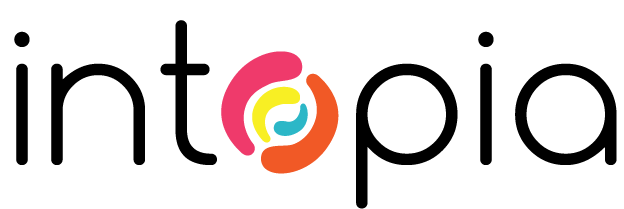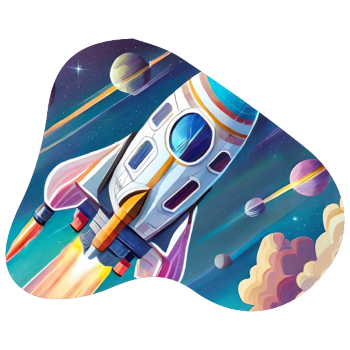It feels like it was just yesterday we started, but we’ve officially clocked up our first year at Intopia. What started as a conversation amongst accessibility avengers who thought ‘hey, maybe we could do something cool here’, has now turned into a five-person operation across two cities. It’s safe to say we’ve been blown away by the amount of support this group of change-makers has received.
Taking a look back on our first year, our three Directors Adem Cifcioglu, Sarah Pulis and Stewart Hay share their thoughts on Intopia’s biggest successes, what they think of the accessibility and digital inclusion space moving forward, and where they see Intopia heading over the next twelve months.
What do you think have been Intopia’s biggest successes so far?
Sarah: One of our core principles when we started Intopia was that we wanted to be partners with our clients, and support them as much as we could. We wanted to look after our clients, and in looking after our clients we were also helping to create more inclusive, accessible experiences for people generally. And I think we are succeeding. We’ve formed some great relationships with our clients who are giving us repeat business. We’re providing quality work that makes it easier for our clients to understand what they need to do and why they need to do it. As one client put it — we are the organisation that gives a shit.
Stewart: Earning the trust of so many big clients has been a great success in out first year. Without their support we wouldn’t be in the position we are today. This has enabled us to support wonderful events like A11y Bytes and A11y Camp which continue to push the importance of digital accessibility in Australia. Lastly we have been able to attract some great people to our team who are extremely passionate and knowledgeable about digital accessibility.
Adem: We’ve put together a kick ass team of passionate people, who working together want to make the digital world a better, more inclusive place. We’re working with some of Australia’s biggest companies, and helping them create more accessible products and services. Doesn’t get much better than that, does it?
Adem and Sarah, you’ve worked in the accessibility space for some time — where do you feel the sector is headed, and where do all of our roles as change makers fit in that?
Sarah: In Australia, we’ve seen increasing awareness of accessibility, and in certain organisations an increased understanding that technical accessibility (i.e. compliance with WCAG) doesn’t mean an experience is usability. I am heartened by this increased maturity in how accessibility is viewed. However, there is still a long way to go to educate more people about accessibility, and that include design and development practices that involve real users must be included in every project, from the beginning.
Adem: Accessibility is becoming more mainstream, it’s a slow process, but it is happening, particularly as Australia’s population is ageing. In terms of our roles specifically, we need to be leading the way, in both advocacy and support. We know accessibility, and I’d say it’s our job to share and spread that knowledge. But also to help come up with appropriate solutions to new accessibility problems (new development frameworks, issues with VR technology, touch screen etc.)
What are some of the things you’ve learned over the past year?
Stewart: My role is a little different in the team and I am not one of our experts in digital accessibility. So over the last year I have been learning a lot about what digital accessibility is, how it can be of benefit and how to tell if a site isn’t accessible. One area I have found interesting has been increasing my knowledge around the use of colour. Not surprising considering my early career working with maps. I have also been learning more about issues like keyboard traps. Thanks to Allison, every time I encounter a keyboard trap all I hear is Admiral Ackbar screaming out ‘It’s a Trap!’
Adem: When you’re doing what you love, with people you love to work with, it doesn’t feel like work. I work best in a team, and wouldn’t go back to the one-man band thing. Sarah is more awesome than I knew, and as more ideas than anyone I’ve ever met.
Sarah: Running a small business is a balancing act, and having a great team to support you is paramount. I’m incredibly proud of our team, as individuals and as professionals. You also learn that you can only do so much. It is not worth burning out in the first year. Be strategic. Bring the right people into your team. Laugh. Make sure you are still having fun.
What advice would you give someone who is learning about or implementing accessibility for the first time into their work?
Adem: Start small, pick a single page or feature of a website and mark it up semantically. Clean, semantic html is the key.
Sarah: Start small and don’t be daunted by the amount that must be done. Focus on the things that are applicable to your role and some quick wins with big impact. Don’t get disillusioned. I’ve been the person who is just starting, or the person who is trying to force change on an organisation that is difficult to shift. Find like-minded peeps outside your organisation to support you — and to rant to as needed.
Stewart: Digital accessibility isn’t something you can bolt onto a project at the last minute. It needs to be part of the discussion across the whole development life cycle. So make sure you have a digital accessibility expert involved in your project from day 1. This will save the project money in the long term and reduce project risks. If you are using an external development group then make sure digital accessibility is included in the requirements and use an independent accessibility expert to audit the digital product. It also helps to be upfront with the development group that you will be using an independent organisation to audit their work and if it doesn’t pass the audit it is their responsibility to rectify all issues at their cost.
Where do you see Intopia headed over the next 12 months?
Sarah: Now that we have a year under our belt, it is time to make some of our ideas we’ve been kicking around a reality. We’ll invest more time into products that help move accessibility forward, such as our face-to-face and online training that will help organisation become even more self-sufficient when it comes to accessible practices, and our usability database to make it easier to consult and test with real users during projects. We’ll start to share our experiences though more articles and presentations. We’ll continue to support community initiatives as an organisation and as individuals, such as A11y Bytes, A11y Camp and the meetups around Australia. We’ll continue to forge great relationships with people in Australian and around the world. And we will continue to grow our awesome team — get in touch if you’d like to work with us.
Stewart: Our first 12 months with Intopia really felt like we were on a rocket and I think we have only just recovered from the initial whiplash. I don’t expect the next 12 months are going to be any different for the following reasons:
- Increasing demand for help from both existing and new clients.
- Launch of our range of training courses.
- Completion of the development of our database of usability testers.
- Supporting A11y Camp again this year which will be returning to Sydney.
As a result of all this work we will be adding more people to our growing team at Intopia. No matter what happens it is going to be a fun and interesting 12 months!
Adem: To quote Stewart ‘we’re going to take over the world’… But in all seriousness, who knows. I think 2017 is going to be a huge year full of fun for team Intopia. More staff, more clients and more exciting projects. Bring it on!!!

